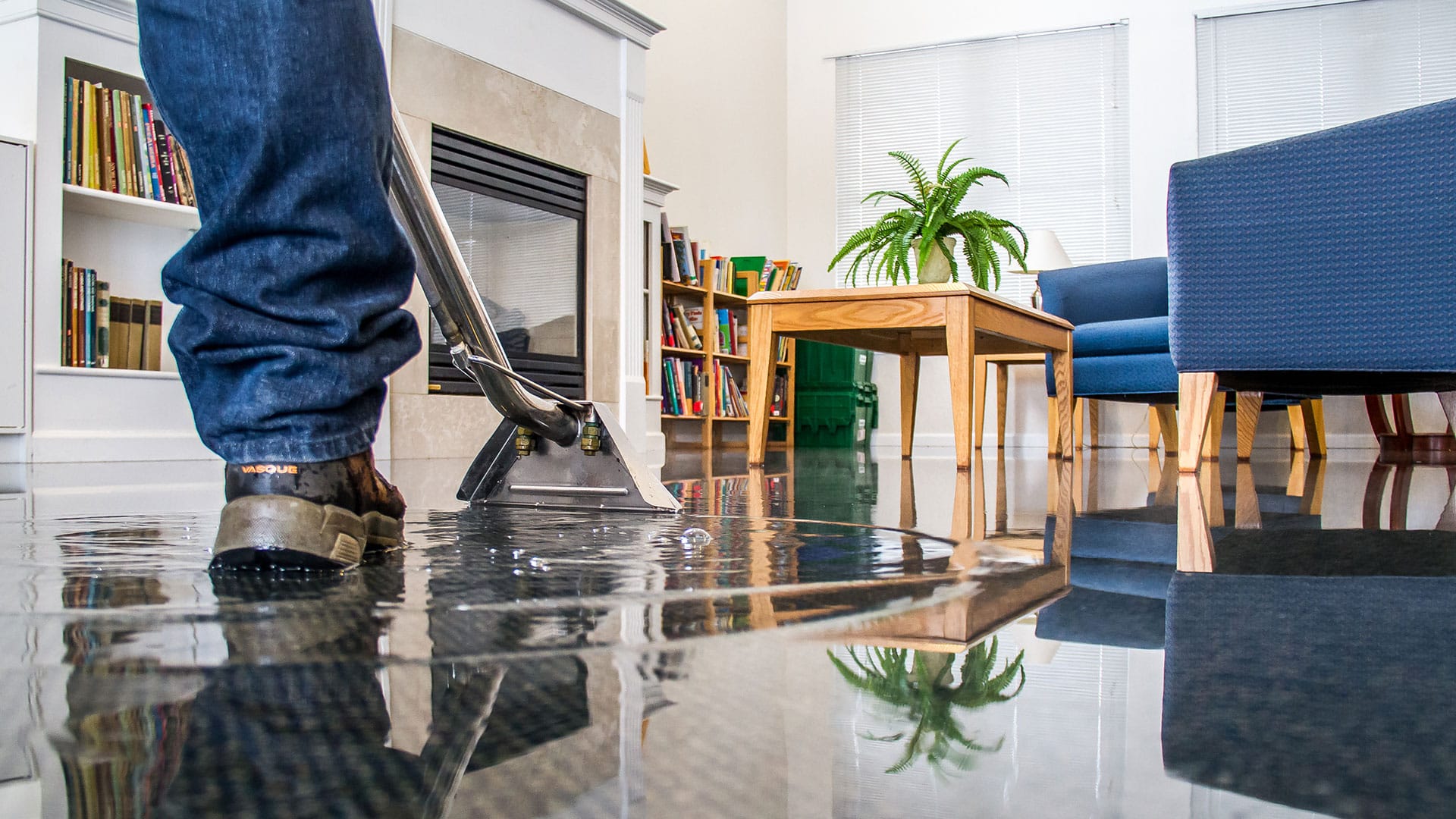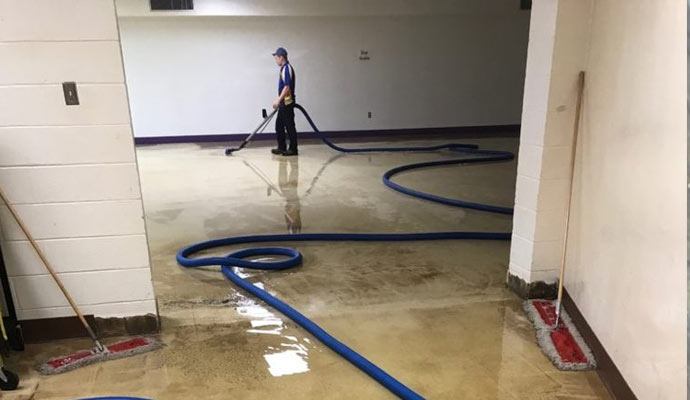Water Damage Restoration 101: Understanding the Process and Cost
Water damage can strike suddenly, leaving home owners in a state of complication. Recognizing the remediation process is necessary for reliable recuperation. From evaluating the damage to selecting the right provider, each action affects the general result and expense. Aspects such as the kind of water damage and seriousness likewise play a considerable duty. What are the details strategies made use of in reconstruction, and just how can one prepare for possible expenditures?
Kinds of Water Damage
Water damage can develop from different sources, each providing distinct challenges for restoration. The 3 key kinds of water damage are categorized based on contamination degrees: clean water, gray water, and black water. Tidy water stems from sources like broken pipelines or rain, presenting very little health threats. Gray water, that includes wastewater from sinks or washing machines, consists of pollutants that may create pain or ailment if consumed. Black water, the most hazardous group, originates from sewer or floodwaters, including hazardous bacteria and virus. Each kind requires particular restoration methods and security actions to successfully address the damage and minimize wellness risks. Understanding these differences is essential for home owners and experts entailed in the water damage remediation procedure.
Preliminary Analysis and Inspection
A complete initial analysis and evaluation are important actions in the water damage reconstruction procedure. This stage starts with a professional assessing the degree of the damage, determining the resource of the water breach, and establishing the sort of water entailed - Water Damage Restoration. Specialists use specific devices to gauge dampness degrees in numerous products, such as walls, floorings, and furniture. In addition, they evaluate architectural integrity and potential health and wellness threats, consisting of mold and mildew development. The searchings for from this assessment notify the remediation plan, assisting necessary actions and source allocation. Accurate documents of the damage is crucial for insurance claims and future reference. In general, this first evaluation prepares for effective restoration, guaranteeing an in-depth feedback to the certain situation handy

Water Removal Strategies
Adhering to the preliminary analysis, efficient water extraction methods are used to alleviate damage and prevent additional problems. These strategies entail the use of specific tools such as industrial-grade vacuums and submersible pumps. The selection of method depends upon the volume of water existing and the type of products impacted. For standing water, submersible pumps are normally utilized for quick elimination, while vacuum cleaners are ideal for removing water from rugs and upholstery. Furthermore, advanced methods like water extraction mats may be employed for hard-to-reach areas. The goal is to get rid of as much water as possible, reducing the capacity for mold development and structural damage. Motivate and efficient water extraction is crucial in the general water damage repair process.
Drying Out and Dehumidification Process
As soon as the water removal is full, the drying and dehumidification procedure comes to be critical to restoring the affected location. This phase typically utilizes industrial-grade dehumidifiers and air movers to successfully minimize wetness levels. The dehumidifiers pull in damp air, getting rid of excess humidity, while air moving companies circulate air to speed up dissipation. Monitoring tools is usually utilized to track moisture and temperature degrees, guaranteeing optimal drying conditions. The duration of this procedure can vary depending upon the level of the water damage and ecological aspects. It is vital to thoroughly completely dry all affected products, consisting of wall surfaces, floor covering, and furnishings, to stop mold development and structural damage. Correct execution of this step is essential for a successful repair outcome.
Cleansing and Disinfecting Damaged Locations

Preliminary Evaluation and Inspection
Before beginning any type of restoration initiatives, a thorough initial analysis and assessment of the affected areas are important for efficient cleansing and disinfecting. This procedure entails identifying the extent of water damage, determining the source of the water invasion, and reviewing the products impacted. Inspectors normally search for signs of mold and mildew growth, structural stability problems, and harmed belongings. The evaluation also includes inspecting wetness levels utilizing specialized tools to ensure no covert water pockets remain, as these can cause further problems. Recording the findings is crucial for planning the following steps in the remediation process. A thorough initial assessment allows remediation experts to create a targeted approach for effective cleansing and sterilizing, eventually minimizing damage and health and wellness risks.
Cleaning Techniques and Products
Effective cleansing and sterilizing of water-damaged locations require a range of items and techniques customized to the certain materials impacted. For porous surface areas like drywall and carpeting, removal Water Damage Restoration techniques are vital to get rid of excess wetness, complied with by deep cleansing with specialized detergents. Non-porous products such as tile or steel can be cleansed using commercial-grade cleansers that properly get rid of contaminants. Heavy steam cleansing is another effective strategy, specifically for carpetings and upholstery, as it makes use of high temperature levels to eliminate microorganisms and mold. Furthermore, eco-friendly products are progressively popular for their safety and efficiency. Ultimately, choosing the suitable cleaning techniques and products not just guarantees immediate cleanliness yet also help in preventing additional damage and carcinogen related to water breach.
Sanitization and Disinfection Methods
When attending to water damage, proper sanitization and sanitation techniques are vital to assure the safety and wellness of the damaged setting. After preliminary cleaning, surfaces should be treated with ideal anti-bacterials to remove virus, mold, and bacteria that prosper in moist problems. Common approaches consist of making use of EPA-approved chemical disinfectants, which can be used with spraying or cleaning strategies. Furthermore, ultraviolet (UV) light systems can properly disinfect locations by reducing the effects of microorganisms without extreme chemicals. The selection of method usually depends on the kind of products impacted and the degree of contamination. Inevitably, comprehensive sanitization not only recovers a safe home however also assists avoid future wellness threats connected with lingering dampness and mold growth.

Repair Work and Restoration Options

Elements Affecting Restoration Costs
The degree of water damage straight impacts the repair costs house owners can expect to incur. Aspects such as the source of the water, the duration of exposure, and the afflicted products substantially affect rates. Clean water damage from a broken pipeline is generally much less pricey to restore compared to damage caused by sewage (Flood Cleanup Services). Furthermore, the level of contamination dictates the need for specialized cleaning and disposal services, additionally raising expenditures. Geographic area additionally contributes, as local labor rates and availability of restoration solutions can vary. The necessity of the action impacts costs; quicker interventions normally lead to reduce general expenses by protecting against additional damage. Understanding these factors is essential for home owners when approximating reconstruction prices
The three key kinds of water damage are classified based on contamination degrees: clean water, grey water, and black water. A detailed preliminary evaluation and assessment are important steps in the water damage remediation process. For standing water, submersible pumps are typically used for rapid removal, while vacuums are optimal for drawing out water from carpetings and upholstery. The level of water damage directly influences the repair costs house owners can expect to incur. Clean water damage from a broken pipe is usually less costly to restore contrasted to damage created by sewer.